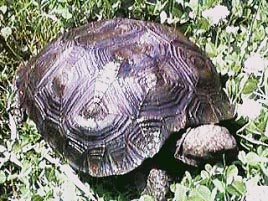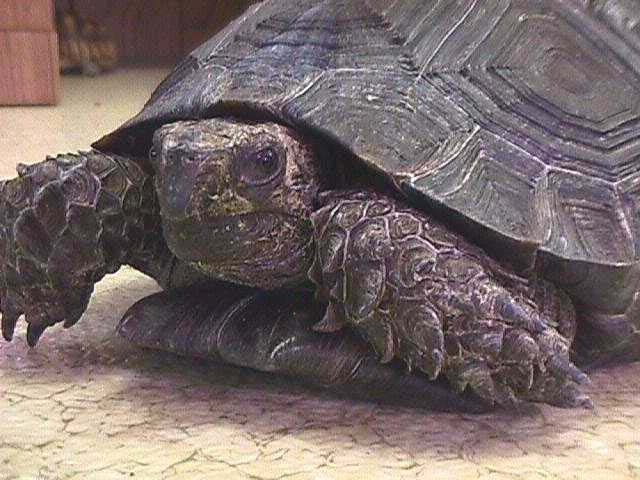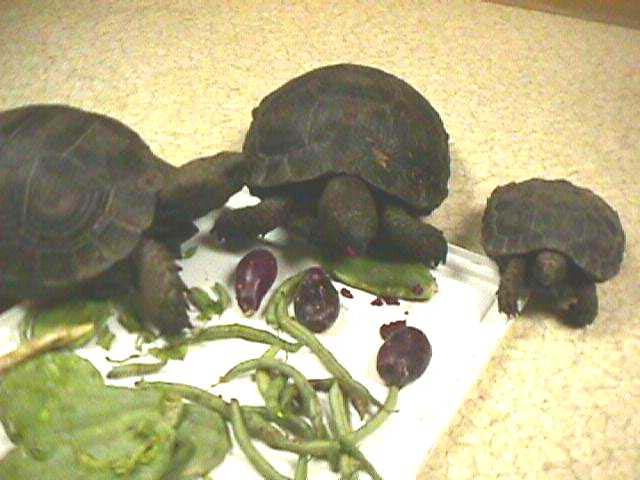|
Identification:
The Burmese Mountain Tortoise is generally considered the fourth largest land tortoise in the world. It is second in size only to the Sulcata among the mainland tortoises, reaching maximum weights of close to 100 lbs. The phayerei subspecies is generally considered to be the larger, with emys emys usually only reaching 2/3 the size of their relatives. The emys subspecies is also called the Burmese Brown Tortoise while the phayerei is called the Black. Both have also been called the six-footed (legged) tortoise due to the very large and pointed tubercular scales on the rear thighs.
In the wild, Burms are found in Assam, Burma, Thailand, the Malay Peninsula, Sumatra and Borneo. They prefer moderate (as opposed to desert) temperatures of 55F to 85F and relatively high humidity between 60% to 100%. Yearlings should not be allowed to reach temps below 65F or so. Despite the high humidity requirement, airflow is a requirement so a closed or stagnant air cage is not recommended. Hiding spots are preferred, as are rains or mists which will usually stimulate a feeding response. Burms are crepuscular, usually active in the morning and evening, but can be found basking or wandering about during a cool day.
Diet is very widely varied, consisting of minimal grasses but lots of clover, plantain, dandelions and other broadleaf weeds. Vegetables, including greens, cactus, cauliflower, yams and squashes are preferred, but fruits and worms are also readily consumed. Protein intake is higher than most grazing herbivores such as Sulcata and Leopards, but this is to be expected given the availability of invertebrates and carrion in their natural environment.
Youngsters are often very shy, emerging from hiding only to eat, but as they grow (and they grow very quickly) larger specimens show a great deal of curiosity and will often approach to see what you are doing in their yard. If no food is offered, they may well try a tentative bite or nip to see if a finger or toe is tasty. Watch out, they can bite very hard!
They can be considered the stereotypical tortoise in that they are very slow and deliberate in all their movements, the shell is not attractively patterned and they don't dig long burrows, but they are a very fascinating and personable tortoise, if you have the room for them. They are also considered the most ancient genotype of tortoise still living, so in a Burm, you really do have a prehistoric animal.
|
|





